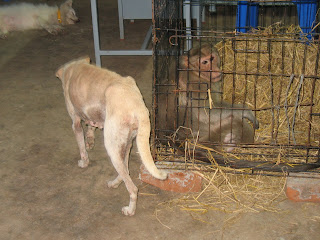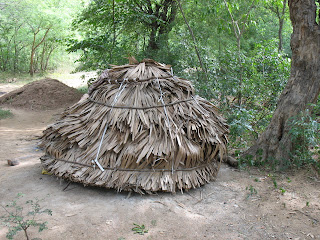Marking victory of the good over the evil
(November 8th 2007)
Diwali, the festival of lights signifies victory of good over evil and knowledge over ignorance. The most significant meaning of Diwali is “awareness of the inner light,” and as light dispels darkness, this festival of lights dispels ignorance. The bursting of crackers symbolizes threatening the evil spirits. Deepavali (now in the modern world termed Diwali) means array of lights representing knowledge, virtue, love, compassion and humanity.
Various parts of India observe Diwali for different reasons. In North India Diwali is celebrated to mark the Victory of Lord Rama over Demon King Ravana and Rama’s return to Ayodhya. While people in east India, celebrate Diwali in order to pay their respects to Goddess Lakshmi, (the Goddess of wealth and prosperity) and pray for Her grace and blessings. In some parts of India Diwali is celebrated to commemorate the triumph of Lord Krishna over the Asura King Naraka. In Bengal, Goddess Kali or Durga, the goddess of strength, is worshipped. This reverence is called "Kali Chaturdashi". Strength is a positive attribute for one to have but it must be used to protect others from harm and used only in good and pure deeds.
 Irrespective of why Diwali is celebrated, the common understanding is that it represents victory of good over evil. The lights, which represent prosperity, welcome Goddess Lakshmi in the hope that She will bless with wealth and abundance.
Irrespective of why Diwali is celebrated, the common understanding is that it represents victory of good over evil. The lights, which represent prosperity, welcome Goddess Lakshmi in the hope that She will bless with wealth and abundance.
Diwali is celebrated for 5 days. In South India at Diwali people; use gingelly oil to wash their hair which represents the washing away of sin, wear new clothes symbolizing prosperity and burst crackers and fireworks to mark the day with happiness and positive energy, and share sweets with neighbours and relatives signifying love, compassion and unity.
Diwali has special significance for the business community as they consider this day to be the perfect time to begin the new financial year. This is also the most auspicious time to commence new business ventures and sign business agreements.

A mythological story of Sagar Manthan (churning of the ocean) has it that once all the Devas, or demigods were under a curse that made them weak and were advised by the God Brahma to drink the elixir of life. However the elixir could only be obtained by the churning of the ocean. Lord Vishnu came up with a solution saying that Mount Meru could act as the churning stick, while Vasuki (the mythical serpent) could be used as the coil around Meru. Pleased with the suggestion, the Devas went to the Asuras (the demons) and sought their help in accomplishing the task.
Thus ensued a phenomenal churning that, however, threatened to destroy the worlds (Heaven, Earth and Hell). The Gods could not allow that, so Vishnu appeared in the guise of a giant tortoise (Kurma) to stabilise the churning by acting as a base under Mount Meru. It is said that eventually, spectacular treasures emerged from the great ocean including Laksmi the Goddess of Prosperity and Wealth.
Since Goddess Lakshmi was one of the magnificent treasures that emerged from the ocean, hence, along with Ganesha, who is customarily invoked before ceremonies are performed, this Goddess presides over all ceremonies that are performed during Diwali.
During Diwali, Goddess Lakshmi is worshipped along with Lord Kubera (the banker of the world). In many parts of India puja worshipping Lakshmi and Lord Kubera, is done on the very next day of Deepavali and thereafter all new work/business commences.




















































